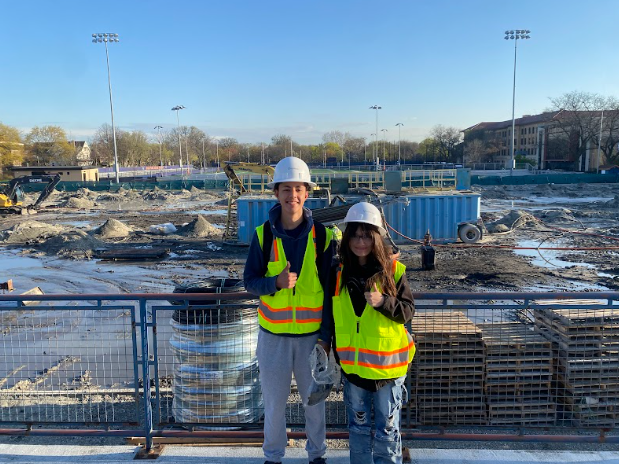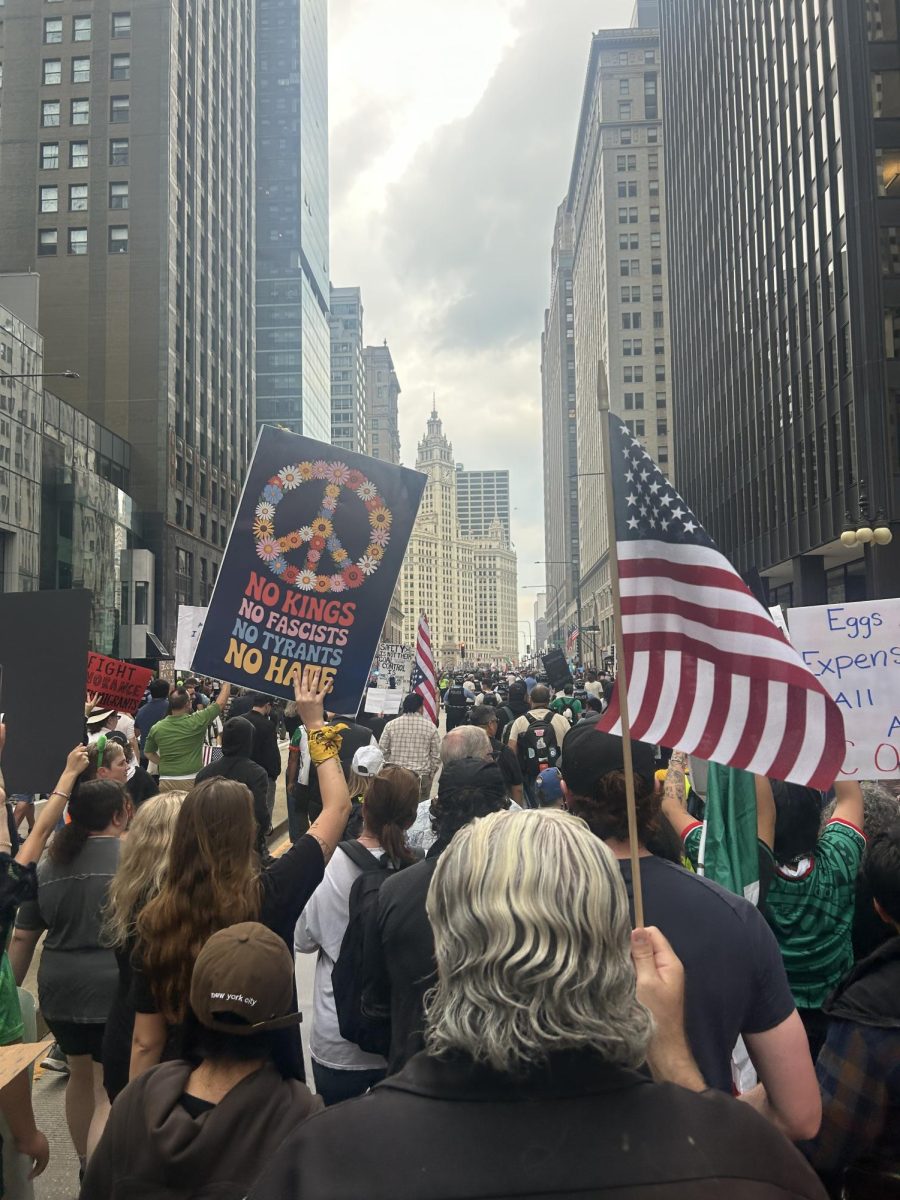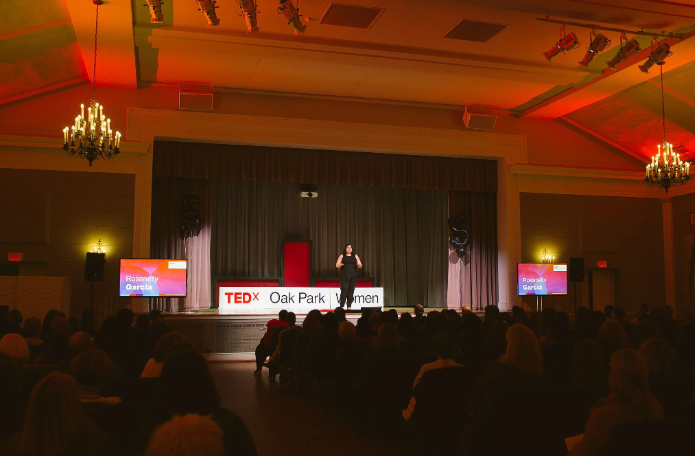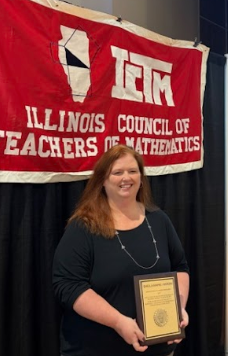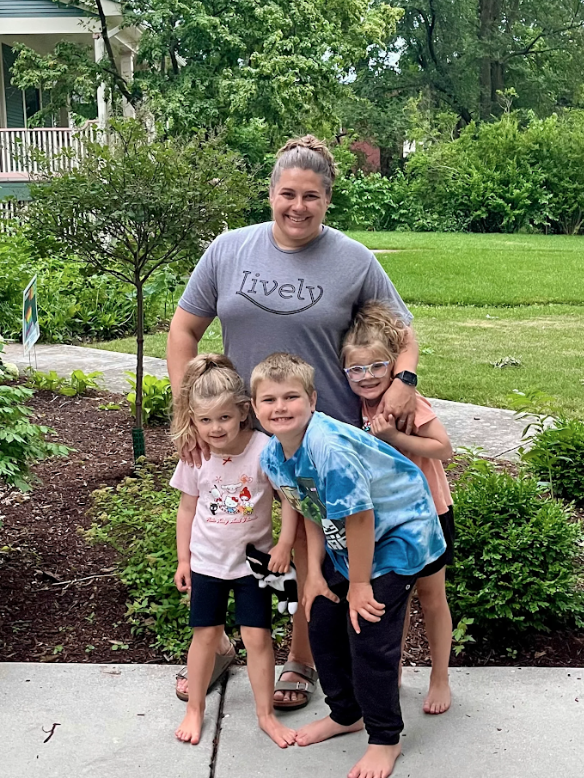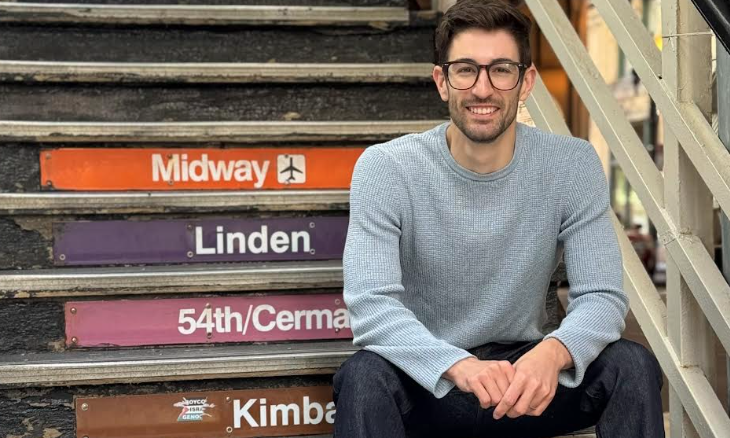Since the Oak Park and River Forest Board of Education voted to approve the geothermal construction project in November, the football field has become a construction site where 240 wells, each 150 feet deep, are being drilled towards the earth’s crust. Thanks to an internship offered by the contractor Veregy LLC, two OPRF students are getting the chance to observe the project firsthand.
One of the two interns, OPRF senior Connor Czerniawski, said, “This internship gives me an opportunity that not even a lot of college students get.”
Construction started in the fall on the football field and is projected to be complete in July. This $12.5 million project is going to heat and cool the new athletic wing, Project 2, and is expected to save the school approximately $385,000 a year in heating and cooling costs, according to OPRF Assistant Superintendent for Business Services Anthony Arbogast and the OPRF website.
Czerniawski and junior Isebella Kessel are watching the whole project unfold as part of their internship through Veregy, a Phoenix, Arizona-based contracting firm that specializes in green energy. According to Veregy, the primary objectives of the internship are to expose students to dynamic career paths, provide real-world problem-solving experience and develop personal skills.
The interns had to go through a rigorous application process to get their roles. According to Kessel and Czerniawski, they first had to create a resume and an essay response, then undergo an in person interview. Some of the opportunities the interns have gotten are touring the construction site, learning about construction manage-
ment, meeting with people throughout Veregy and learning how geothermal energy works.
Outside of the internship, Czerniawski is involved in boys tennis and Enviro Club. He plans to attend Illinois Urbana-Champaign next year for environmental engineering. Kessel gives flute lessons through Ping, loves to plant and is interested in environmental engineering.
The interns currently meet with Veregy on Tuesdays and Thursdays at differing times, and will meet Monday through Friday every week once the school year ends. The interns are paid $15 an hour.
Kessel said, “It’s been a really fun experience, and I’m definitely looking forward to seeing what the future holds in the summer.”
Learning the science behind the project is a big part of the internship. Geothermal energy is the process of using the Earth’s natural temperature for heating and cooling. The holes being dug in the football field are actually for geothermal wells, or pipes. Fluid will then be sent down the wells. When the school is in need of heat, the fluid will be heated by the Earth’s natural heat, and when the school is in need of cooling, the excess heat from the fluid will be absorbed by the ground. Geothermal is considered a renewable source of energy because of the constant radioactive decay in the Earth’s crust, which is the source of the energy.
Arbogast explained that there are multiple phases to completing this project. First, a geothermal vault needs to be installed, which will transfer the heat from the geothermal wells to Project 2. The construction of the vault has already
been completed. Next, 240 geothermal wells need to be dug into the football field. According to Arbogast, as of April 10, 176 wells have been drilled. “The drilling of the wells will mostly be done this month,” he said.
After that, a new drainage system for the field will be installed. Finally, the new turf will be put on, and the project will be complete. Arbogast predicted that the final project will be done by the end of July.
The school is expecting $10 million in rebates from the Inflation Reduction Act, or the IRA, but there is also concern if those rebates will still be available by the end of the project because of the Trump Administration. “The best we can do is wait and see as the new presidential administration makes changes and be prepared to pivot if needed,” said Arbogast.
The school is able to claim such a large amount because the IRA is applied to both geothermal and Project 2, since it will be the heating source. While no action has been taken on this specific rebate, the Trump Administration has been rolling back rebates through the IRA.
Historically, if the project has already been completed, the school would get grandfathered into the rebates. If the rebates are eliminated, Arbogast said, “We would just have to reduce some other capital projects in the building, like some general repairs and maintenance.”
The geothermal project plays into the school’s larger sustainability goals. Those goals include reducing the school greenhouse gas emissions 45% from the 2012 levels by 2030, and to go fully carbon neutral by 2050. The geothermal project is projected to save the school approximately 442,000 pounds of carbon dioxide emissions a year, which is the equivalent of driving a car 504,984 miles.

